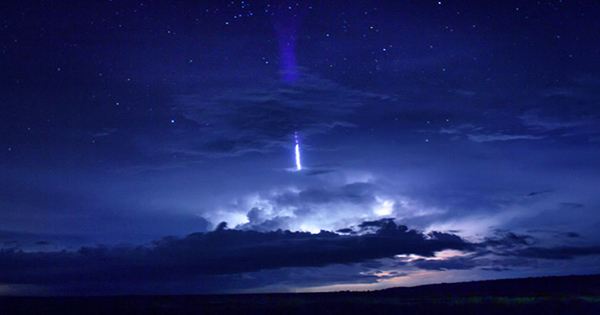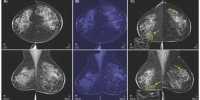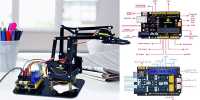Lightning strikes usually result in flashes of lightning, streaming a brightly spotted line from the clouds shaking through the shortest path on Earth, but did you know that sometimes lightning germinates directly instead? Oh, and it’s blue. “Blue jets” – lightning-like electrical discharges in the stratosphere up to 50 kilometers (30 miles) from the top of a thunder cloud and lasting perfect milliseconds – are rare but unheard of.
We don’t usually see them, as clouds create storms and the atmosphere protects us from radiation, blurring our vision from the earth. Not so, for the International Space Station’s (ISS) weather monitoring equipment. Looking down on Earth’s weather from 400 kilometers above offers a front-row view.
Now, using the European Atmosphere-Space Interaction Monitor (ASIM) over the ISS, researchers have documented five intense 10-millisecond blue flashes, creating a pulsating “blue jet” that intersects the stratosphere (the boundary between the stratosphere and the mesosphere), generating the glowing disk of optical and UV light known as “elves”. ASIM Observer – often known as “Storm Hunter” – was installed at ISS in 2018 with the aim of documenting electrical discharge from storms at the top of the cloud and now it has fulfilled its purpose, the researchers published their findings in the journal Nature.
In the early 1990s, when we accidentally caught a video of Sprite on camera, we proved this unusual type of lightning – jets, sprites, and elves – collectively known as transient light events (TLEs).
A few years later red sprites and blue jets were confirmed by video surveillance of NASA’s space shuttle, then the bows were discovered (light emission due to the source of the electromagnetic pulse and necessarily short at very-low-frequency partitions). All of these phenomena are very bright but last only in milliseconds, so they are difficult to observe and study.
In 2015, ESA astronaut Andreas Mogensen was tasked with conducting a test known as Thor (after the Norse god of lightning) to obtain lightning from the ISS using the new lightning imagery system. His pictures of blue jets and flashes were installed on the ASIM storm hunter space station in 2018. These phenomena are difficult but important to capture in our research on the Earth’s climate system. Researchers suspect that they may also affect the concentration of greenhouse gases in the Earth’s atmosphere, so understanding how lightning in the clouds can help reduce our planet’s CO2 emissions. Also, they look really great.













